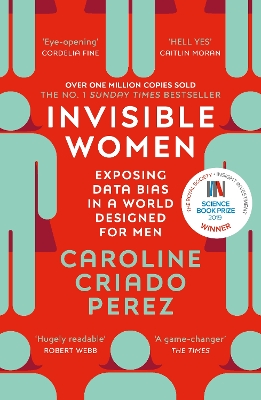Reviewed by brokentune on
What an infuriating, thought-provoking, well-researched, well-presented investigation into the gender data gap and the problems this causes with respect to women being represented in all parts of life.
The breadth and level of detail that the author covers is fantastic. The referencing to research alone makes this book stand out for me as it does back up what often is communicated as anecdotal evidence - i.e. is usually disputable - with something far more concrete. The statistics are staggering and infuriating. Not as maddening, tho, as the apparent apathy towards the gender data gap - i.e. the lack of data based on women.
For example, medical research is mostly done using men. The results are then applied to all people as if there were no biological differences in how treatments and medications work, which is mad because there are differences.
Criado-Perez covers too many aspects of life to list, but her argument - and it is a strong argument - boils down to this: There is a lack of data that not only includes women (of which there seems to be a severe lack) but there is an equal and related lack of data that actively differentiates results to data collected based on men. And this lack of data and the lack of even acknowledgement that this data is important is one of the main reasons that we still cannot speak of gender equality, even in what people refer to as the developed world.
I'm so glad my colleague lent this to me.
I have also just ordered my very own copy so I can lend it to other people.
Failing to collect data on women and their lives means that we continue to naturalise sex and gender discrimination – while at the same time somehow not seeing any of this discrimination. Or really, we don’t see it because we naturalise it – it is too obvious, too commonplace, too much just the way things are to bother commenting on. It’s the irony of being a woman: at once hyper-visible when it comes to being treated as the subservient sex class, and invisible when it counts – when it comes to being counted.
There is one more trend I kept coming across while writing this book: the excuses. Chief amongst these is that women are just too complicated to measure. Everyone was saying this, from transport planners, to medical researchers, to tech developers: they were all knocking their heads up against Freud’s riddle of femininity and coming away baffled and defeated. Female bodies are too unharmonious, too menstrual and too hormonal. Women’s travel patterns are too messy, their work schedules are too aberrant, their voices are too high. Even when, in the early twentieth century, influential Swiss architect Le Corbusier was devising a standard human model for use in architecture, the female body was ‘only belatedly considered and rejected as a source of proportional harmony’, with humanity instead represented by a six-foot man with his arm raised (to reach that top shelf I can never reach).
The consensus is clear: women are abnormal, atypical, just plain wrong. Why can’t a woman be more like a man? Well, apologies on behalf of the female sex for being so mysterious, but no, we aren’t and no we can’t. And that is a reality that scientists, politicians and tech bros just need to face up to. Yes, simple is easier. Simple is cheaper. But simple doesn’t reflect reality.
Reading updates
- Started reading
- 29 January, 2020: Finished reading
- 29 January, 2020: Reviewed
